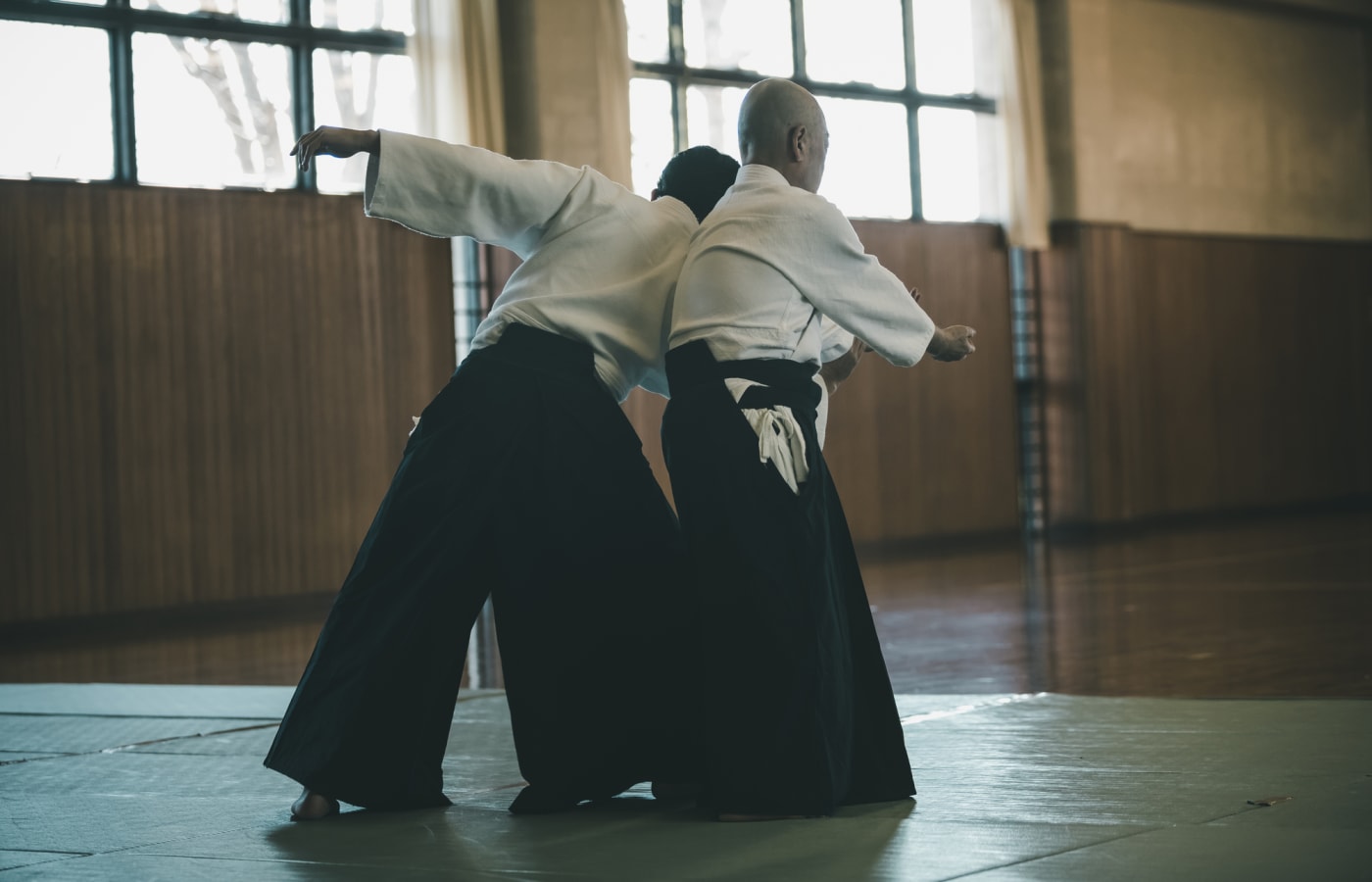
It's not how to beat an attacker that is important when deciding how to defend yourself. The key question should be how you can prevent this from happening. Ninjas view violent crime in terms of a clearly defined process and clear stages. This understanding forms the foundation of all successful self defense. This concept can be applied to self defense training but in a more practical setting. These are the questions you should ask before enrolling in a ninja course on self-defense.
Alternatives to ninja self-defense
There are alternatives to Ninja Self Defense for Peaceful People. If you're looking for a comprehensive, yet affordable way to learn self defense, then this course may be a good choice. It's written by Chris Martins, the creator of a program that's based on ninjutsu and other martial arts. You should be cautious about downloading the course for free.
A video training course is another option to NSDFPP. The video course can be downloaded for free and includes a forum where students can interact and learn from each other. The course also comes with a money-back guarantee if you're not satisfied with the course. The course content isn't sufficient to make people feel confident in their ability defend themselves. You can also look into other self-defense classes if you prefer to learn in a classroom setting.
Methods of ninja self-defence
Ninja Self-Defence Techniques, a comprehensive martial art training system for self-defence is designed to teach practical techniques and mental discipline. It includes instruction for grappling, throwing (choking), joint-locking and striking. These methods are realistic and practical and are based on years of teaching and training. Ninja training does not only focus on physical combat skills. It also teaches people how to develop "real-time awareness" of their surroundings.

The first principle of ninja fire intercepting is to watch an aggressor and respond quickly. Fire a lead hand punch if the attacker is moving forward. Continue forward to catch the aggressor behind his neck. Use a knee strike at the midsection to bring the aggressor's foot back after you have caught them. You can also use this technique to throw the aggressor.
Cost of self-defense classes for ninjas
The cost of ninja self-defense classes varies by location, but you can usually expect to pay between $30 and $80 a lesson for a private lesson. Private classes take up the teacher's valuable time, so the price will increase. It's worth it to gain confidence and protect yourself. Many who have taken this class have gone on to become self-defence experts and have been saved from numerous situations.
A ninja training centre is where you will learn combat strategies and self-defense. These classes are available in three packages, each offering the perfect blend of mind-body mastery, weapon training, and self-defense strategies. You can also learn how to use various weapons, including a bo, sword, and knife. You can also learn the art and technique of jujitsu. This is a Japanese style karate.
A licensed instructor is required to teach ninjutsu
Ninjutsu, an ancient art, is a great place to learn self-defense. This ancient art includes advanced and basic self-defense techniques. These techniques can be combined with modern mixed martial arts exercises to create a self-defense system. You can either take private lessons or sign up for a class. You can choose to enroll in a private lesson or join a class with other people. The instructors will teach the basics of self defense and the techniques that are used.

You may need to be certified in martial arts for some programs. After you've taken the instructor training and passed an in-person course, you may apply for certification. You may need to have a black belt in your chosen martial arts or at a very high level. Some programs accept substitutes such personal training and law enforcement experience. You will need to pass an extensive background check.
FAQ
What are the best foods to avoid when trying weight loss?
Avoid trans fats. Trans fats increase LDL (the harmful) cholesterol and lower HDL (the good).
Trans fats are commonly found in fast food, deep-fried and packaged baked goods as well snack cakes and other processed foods.
These unhealthy fats are also known to cause inflammation and lead to heart disease as well as diabetes.
Avoid eating foods that contain artificial sweeteners. Artificial sweeteners increase the risk of getting cancer.
These chemicals are found in many products, including soft drinks, candy bars, chewing gum, as well as candy bars. They can also be found in other foods like meat, poultry, and eggs.
Artificial sweeteners include saccharin, cyclamate, sorbitol, aspartame, acesulfame-K, and sucralose.
The American Heart Association suggests that you avoid these chemicals as they can cause DNA damage in your cells.
How many times a week should I exercise?
It all depends on your time and the type of exercise that you enjoy. The general rule of thumb is to exercise aerobically 3 - 5 days per week. It is important to not overdo it. To get the best results from your exercise, it is important to be consistent.
Which exercises are best suited for me?
It all depends upon your fitness goals. Some people concentrate on endurance activities such running, cycling, swimming. Others love lifting weights or using resistance bars. There are many options for exercise today. You can choose the one that best suits you.
Can I go to the gym 7 days a week?
Yes, you could go to the gym seven days per semaine but not all at one time. You must find a time you can do it without feeling exhausted and depleted.
This will keep you motivated and provide energy for other activities.
It is important to eat right during these times. This will help you not feel tired or slow at the gym.
You must ensure that you don't have any other competing demands on your time. For example, if you have children, you may want to avoid exercising on school nights as they will distract you from your workout.
What dietary supplement is best for weight loss?
Weight loss requires diet and exercise. However, some people find that certain supplements help them along the way.
Some studies suggest that omega-3 fatty acids may help with weight loss. Omega-3 fatty acid is an essential fat that is important for brain function as well as cell membrane integrity. They're found in seafood like salmon, tuna, shrimp, and cod liver oil.
Other research suggests that green tea might be beneficial for weight loss. Green tea has catechins, which are antioxidants that can help increase metabolic rate and encourage weight reduction.
What is the best workout order?
It all depends on your goals. First, lift heavy weights if you are looking to increase muscle mass. Next, you can move onto cardio. If you are looking to lose weight, then move on to strength training.
Cardio can be done if you want to just lose fat. Next, add strength training.
You should do cardio last if your goal is to increase muscle mass. This stimulates growthhormones, which helps build muscle mass.
Also, eat before you workout. This will fuel your muscles and make them work harder. It makes you feel better when you exercise.
Statistics
- Cardmembers earn 5% Back at Amazon.com with a Prime Credit Card. (amazon.com)
- Get free shipping and 25% off today. (healthline.com)
- Candidates and applicants must pass all four tests at 70% (minimum level) to graduate from Basic Deputy U.S. Marshal (BDUSM) Training. (usmarshals.gov)
- The PRS enabled risk stratification for overall prostate cancer and lethal disease with a four-fold difference between men in the highest and lowest quartiles (HR, 4.32; 95% confidence interval [CI], 3.16-5.89). (pubmed.ncbi.nlm.nih.gov)
- According to the American Heart Association, blood pressure should be checked at least once every two years, beginning at age 20. (my.clevelandclinic.org)
External Links
How To
How do I lose weight while working out?
Exercise reduces calories by increasing metabolism, and oxygen consumption.
Exercise at a moderate intensity to safely lose weight.
These tips will help you burn fat and keep fit while exercising.
-
Cardio exercises include swimming, running or cycling.
-
Do 30 minutes of exercise three times a week.
-
If you want to lose more weight, add strength training to your routine.
-
Avoid intense workouts. You can build muscle and not break down muscle tissue.
-
Hydrate well during exercise. Water flushes out toxins and helps keep the body hydrated.
-
After working out, drink low-fat protein shakes. Protein shakes help repair muscles and boosts energy.
-
You can eat smaller meals throughout the day so that you don't feel hungry in between meals.
-
Don't skip breakfast! Skipping breakfast can make you tired and sluggish.
-
Take care to your mental well-being. Stressful situations can slow down metabolism.
-
Keep a positive attitude. Research shows that overweight people gain more weight if they believe they are overweight than those who believe they look good.
-
Get enough sleep. A lack of sleep makes it difficult to lose fat.
-
Active living is key. Make sure you get up and move every hour.
-
Maintain a healthy diet. A healthy diet will help you feel fuller for longer.
-
Relaxation is possible by finding ways to relax. Tenseness can cause stress hormones to break down muscle tissue.
A balanced diet includes all essential nutrients needed for growth and development.
Consider eating six small meals daily instead of three big ones. This gives your body the time it needs to process what you've eat.
Calcium is required to support strong bones. Calcium is found in dairy products like yogurt, fortified milk beverages, orange juices, cereals and bread.
Calcium can be found in leafy green veggies, beans, tofu and nuts as well as seeds, nuts and cheese.
Vitamin D is necessary for the body to absorb calcium. It's found in fatty fish, egg yolk, and some fortified foods.
Vitamin E is vital for your skin's health. Vitamin E can be found in vegetable oils as well as wheat germ oil, peanuts and almonds.
Your body requires zinc to function normally and for wound healing. Zinc can also be found in legumes, oysters, meats and whole grains.
Zinc deficiencies can lead to fatigue, decreased appetite, depression, and reduced immunity.
Insulin resistance is caused by eating too much sugar, which can increase blood glucose levels. Insulin resistance is linked to weight gain.
Insulin resistance develops when there are high levels of free radicals in the bloodstream. Free radicals are molecules that have unpaired electrons, which can cause damage to cell membranes or other parts of your body.
The main sources of free radicals are food additives.
Free radicals can lead to cancer and heart disease, diabetes mellitus, arthritis, asthma, and premature aging.
Eating a well-balanced diet with antioxidants is the best way to prevent free radical damage. Antioxidants protect against oxidative damage.
Vitamin C can be found in citrus fruits. Beta carotene can be found in carrots. Sweet potatoes. Tomatoes. Carrots. Sweet potatoes. Spinach. Broccoli. Cantaloupe. Vitamin E is found in nuts. Olive oil, avocados.
Selenium, manganese (and zinc) are other antioxidant nutrients.
Selenium protects cells against oxidative damage from free radicals. Selenium can be found in Brazil nuts and liver, kidneys, liver, kidneys, shrimp, cod, turkey and lamb as well as chicken.
Copper protects the brain, eyes, lungs, and red blood cells. Copper can be found in shellfish and poultry as well as meat and organ meats.
Manganese is essential for bone structure. Manganese is found as a component of bone structure in brown rice (spinach, bananas), prunes, raisins and oatmeal.
Zinc is required for normal growth, reproduction and wound healing. Zn is found in lean cuts of meat, white fish, poultry, and eggs.